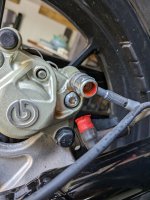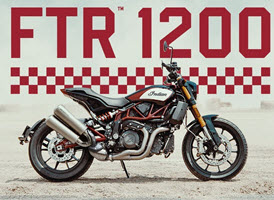Recently got a 2019 FTR S with just 540 miles on it. No mods but PO ran into something and I repaired some front end damage.
Went for a ride yesterday just to get gas when she started to feel sluggish. Right about the time I could pull over to check what was up, the rear brake pressure switch blew out (photo).
Seems some amount of brake was being applied and it overheated. I had the bike on stands and wheel spun with some resistance but not such that I thought anything of it. Rear brake had proper amount of fluid. I'm thinking the brake carrier is deformed slightly and causing friction but not sure.

Went for a ride yesterday just to get gas when she started to feel sluggish. Right about the time I could pull over to check what was up, the rear brake pressure switch blew out (photo).
Seems some amount of brake was being applied and it overheated. I had the bike on stands and wheel spun with some resistance but not such that I thought anything of it. Rear brake had proper amount of fluid. I'm thinking the brake carrier is deformed slightly and causing friction but not sure.


